Africa 2018
City tour
We met our tour guide Kyle Burger from Ilios Tours in the morning for what was called 1/2 day city tour and Table Mountain visit. Due to cloud cover on Table Mountain and the fact that Kyle was to be with us for 3 days we decided to be flexible with the schedule. We toured the downtown and visited the Castle of Good Hope. It was built between 1666 and 1679 and was once a bustling centre for troops. An interesting design feature was the walls were built to shield soldiers whether they attacked from the ocean or the mountainside.
Cape Town was initially settled as a replenishing station for the Dutch ships en route to and from the Far East. They discovered a mountain stream that supplied water and built what is still today called the Company Gardens where they planted crops. They also brought plants and trees from Holland to grow in Cape Town.
The Dutch used slaves from Malaysia and there is a street in the downtown called Buitengracht St where the labour
karen.baldock
16 chapters
16 Apr 2020
Cape Town City Tour
February 23, 2018
|
Cape Town, South Africa
City tour
We met our tour guide Kyle Burger from Ilios Tours in the morning for what was called 1/2 day city tour and Table Mountain visit. Due to cloud cover on Table Mountain and the fact that Kyle was to be with us for 3 days we decided to be flexible with the schedule. We toured the downtown and visited the Castle of Good Hope. It was built between 1666 and 1679 and was once a bustling centre for troops. An interesting design feature was the walls were built to shield soldiers whether they attacked from the ocean or the mountainside.
Cape Town was initially settled as a replenishing station for the Dutch ships en route to and from the Far East. They discovered a mountain stream that supplied water and built what is still today called the Company Gardens where they planted crops. They also brought plants and trees from Holland to grow in Cape Town.
The Dutch used slaves from Malaysia and there is a street in the downtown called Buitengracht St where the labour
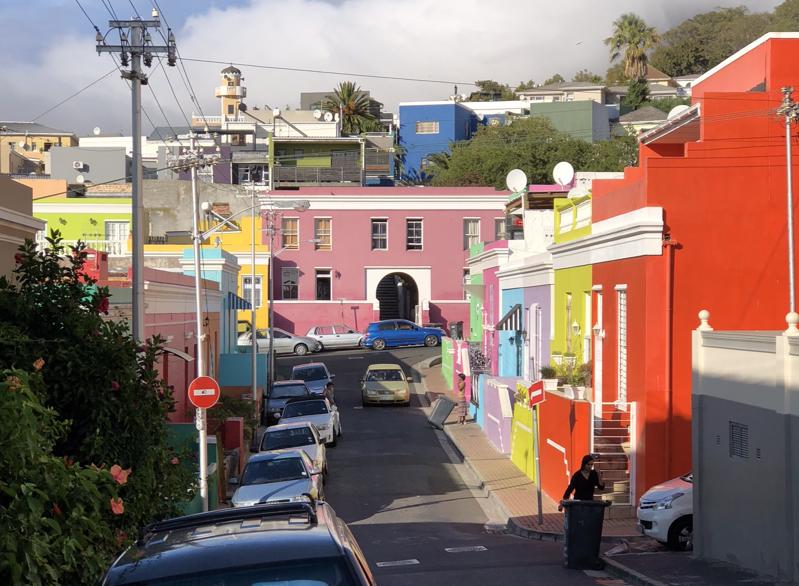
was not allowed to cross except to work. The Dutch had a law that all houses had to be painted beige so the Malaysians decided to spite the Dutch and paint their houses with multiple colours. The area is called Bo-Kaap and was home to what is called the Cape Malay community. Today there is no law that the houses in Cape Town have to be painted beige but there is a heritage law that requires the coloured houses to remain painted the colour they are.
We went to tour what is left of the Company Gardens. In the Company Gardens, there is an old Saffron Pear tree that was planted in 1652 making it one of the first trees cultivated in South Africa. Lots of interesting trees on the grounds. Not many flowers. A small vegetable garden. The stream that once watered the Gardens has been redirected underground.
Since Table Mountain was clouded over we decided to take in
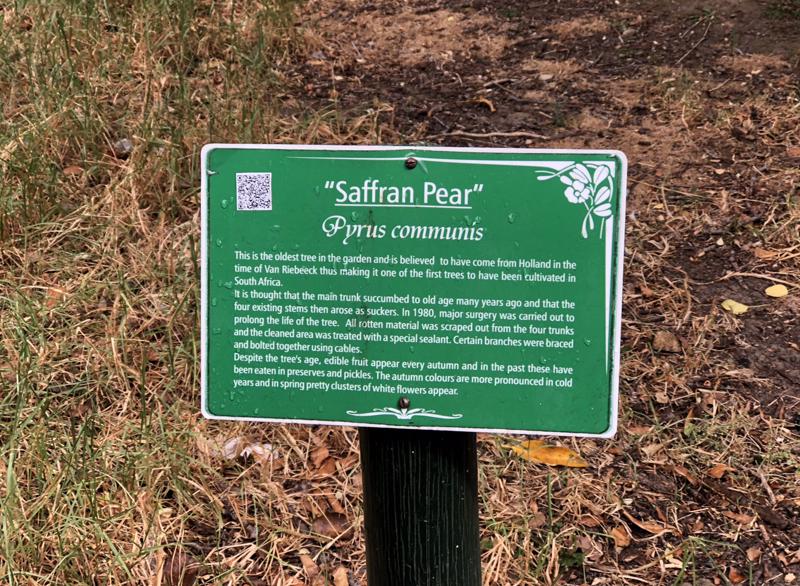
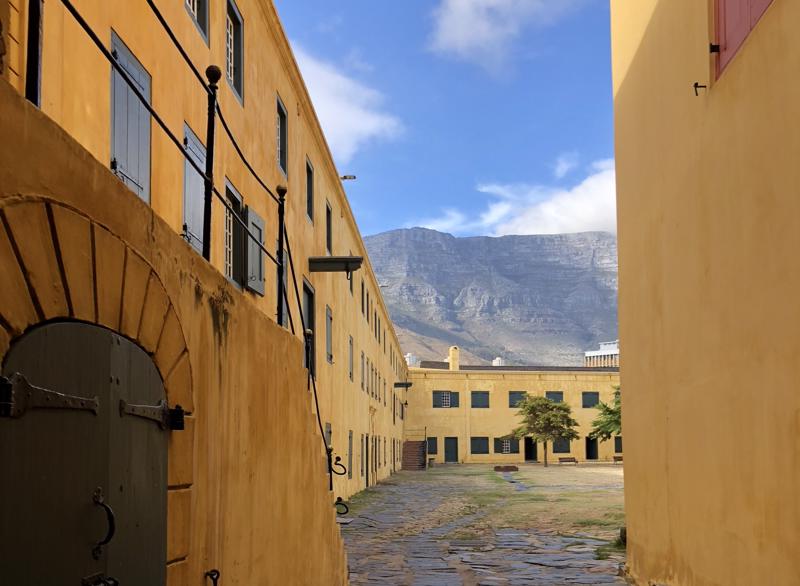

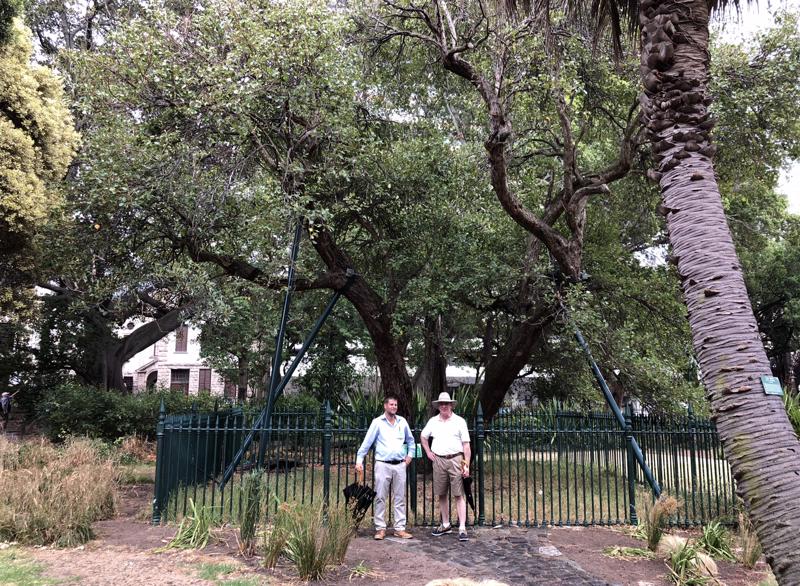
Kirstenbosch Botanical Gardens. It is a beautiful garden with lots of different sections. The first was for plants that are close to extinction. There was also a large protea garden which is the national flower of South Africa. A very interesting section was one with medicinal plants with signage that explained what each was used for. My favourite trees/plants were an African Mahogany, an Atlas Cedar, Fan Aloe and Agapanthus. The main attraction at the park is the canopy tree walk which winds through part of the Gardens. The views of the Gardens are spectacular and you can also see the back side of Table Mountain.
Fynbos is a term commonly used by South Africans. It is the vegetation found growing naturally in the south west of South Africa. Over 7000 species of plants occur in 41000 square kilometers and 80% occur nowhere else on Earth.
Our half day tour ended and we headed to the Victoria & Albert (V&A) waterfront for lunch. What a happening place. Lots of shops, restaurants, entertainment etc there. We had lunch at an outdoor restaurant called Belthazar which advertises itself as having the
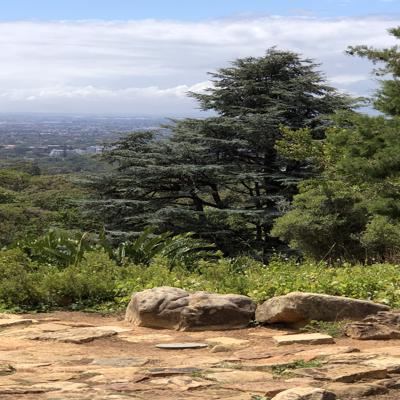
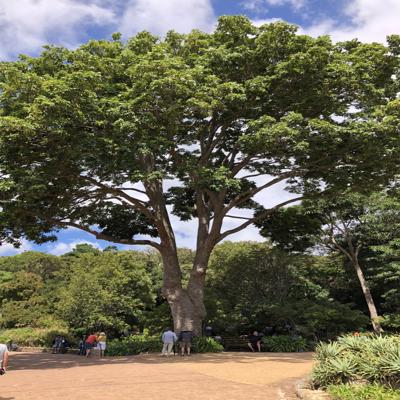
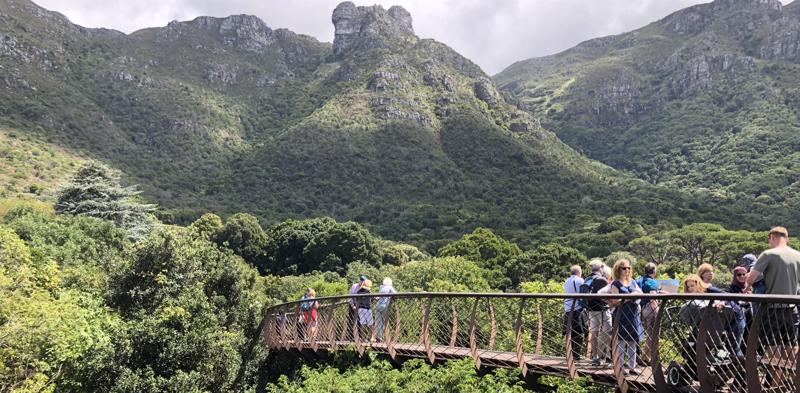
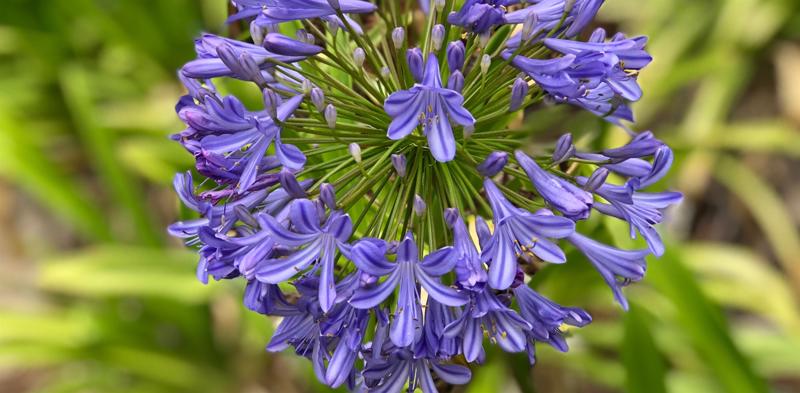
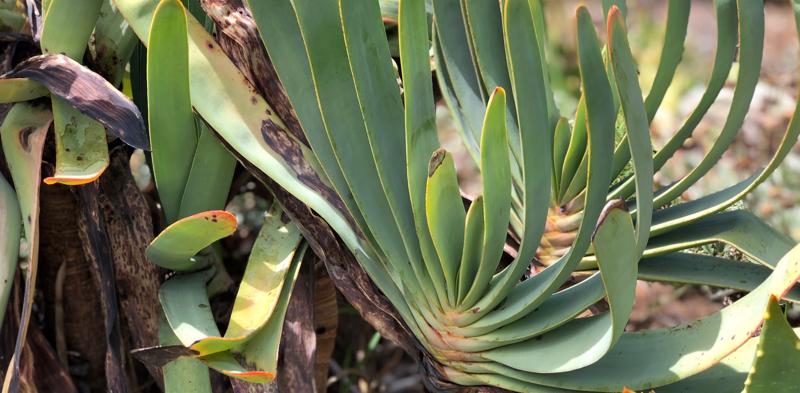
biggest wine by the glass bar in the world. Perfect for us!
Kyle had recommended a place called Karibu for dinner which was also in the V&A waterfront. He recommended ordering their Safari platter which was not on the menu. We got to sample Kudu, impala, wildebeest, Warthog sausage, rump beef (what we would call beef steak), springbok sausage, and ostrich. We also had impala, crocodile, and springbok carpaccio. I found the crocodile too chewy and am not a fan of South African sausage, but the rest was delicious. The sommelier suggested a wine not on their wine list, Simonsig Frans Malays 2014 Cape blend, which was amazing.
1.
South Africa 2018
2.
Orillia to Amsterdam
3.
Amsterdam - Diamonds are forever
4.
Touring Amsterdam - trains, boats and bicycles
5.
Relaxing In Lisserbroek
6.
Flight to Cape Town
7.
Cape Town City Tour
8.
Where the Atlantic and Indian Oceans meet
9.
Wine Country
10.
Rovos Rail Train
11.
Arrival in the north part of South Africa
12.
The Smoke that Thunders
13.
Back to South Africa
14.
Off on Safari
15.
Travels back to Holland
16.
The Final Flight Home
Share your travel adventures like this!
Create your own travel blog in one step
Share with friends and family to follow your journey
Easy set up, no technical knowledge needed and unlimited storage!